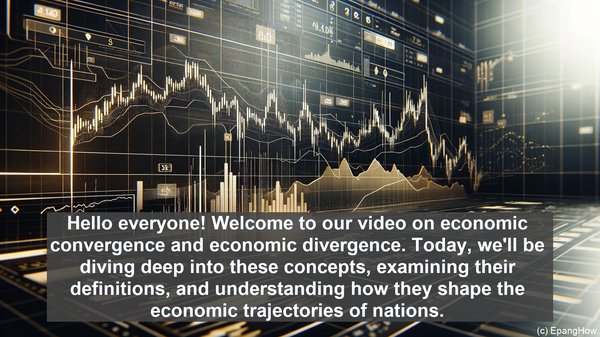Introduction: Setting the Stage
Hello everyone! Welcome to our article on economic convergence and economic divergence. Today, we’ll be diving deep into these concepts, examining their definitions, and understanding how they shape the economic trajectories of nations.
Defining Economic Convergence
Let’s start with economic convergence. Simply put, it refers to the idea that over time, poorer economies tend to catch up with their wealthier counterparts. This can happen through various mechanisms, such as increased productivity, technological advancements, or policy reforms. The ultimate goal of economic convergence is to reduce global inequality, ensuring a more balanced distribution of wealth and resources.
The Role of Factors in Convergence
Several factors contribute to economic convergence. One crucial aspect is human capital. By investing in education and skill development, countries can equip their workforce with the knowledge and expertise needed for economic growth. Additionally, infrastructure development, access to capital, and a favorable business environment are all instrumental in fostering convergence.

Examining Economic Divergence
Now, let’s shift our focus to economic divergence. As the term suggests, it signifies a growing gap between economies. While convergence aims for parity, divergence implies a widening chasm. This can occur due to a range of factors, including political instability, inadequate governance, or systemic issues within an economy. Divergence can have far-reaching consequences, leading to social unrest, geopolitical tensions, and a less harmonious global economic order.
The Impact of Globalization
In the era of globalization, the dynamics of convergence and divergence have taken on new dimensions. On one hand, increased interconnectedness and the flow of ideas, technology, and capital have the potential to drive convergence. On the other hand, globalization can also exacerbate divergence, as certain regions or countries may be better positioned to leverage its benefits, leaving others behind. This underscores the importance of inclusive growth and equitable distribution of globalization’s gains.
Case Studies: Real-World Examples
To truly grasp the implications of convergence and divergence, let’s consider some real-world examples. The European Union, for instance, has seen significant convergence among its member states, with the wealth gap narrowing over time. On the other hand, some African nations have experienced divergence, grappling with persistent challenges that hinder economic progress. These cases highlight the complex interplay of factors that shape a country’s trajectory.
Looking Ahead: Future Prospects
As we look to the future, the question of convergence versus divergence becomes even more pertinent. With rapid technological advancements, the potential for leapfrogging exists, enabling countries to bridge gaps at an accelerated pace. However, this also necessitates proactive measures, such as ensuring digital inclusivity and addressing the potential downsides of automation. Additionally, factors like climate change and resource scarcity can further impact the convergence-divergence dynamic, requiring innovative solutions and global cooperation.

